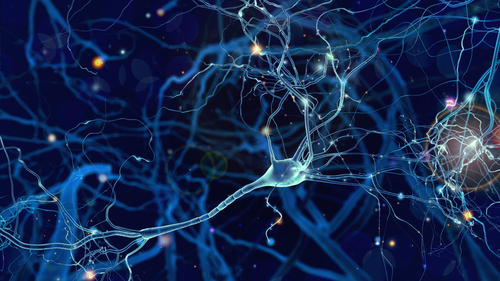Processes Driving FUS Proteins to Clump in ALS and Common Dementia Described in Study

The distinct processes that drive FUS proteins to aggregate and clump in both amyotrophic lateral sclerosis (ALS) and frontotemporal dementia (FTD) were detailed in a new report.
The study, “Phase Separation of FUS Is Suppressed by Its Nuclear Import Receptor and Arginine Methylation,” appeared in the journal Cell.
The FUS protein is found in most tissues and involved in several steps of protein production. In healthy cells, FUS is transported to the nucleus and binds to both DNA and RNA, mediating the synthesis of various versions of certain proteins.
But in ALS and frontotemporal dementia — a common dementia — the entry of FUS into the nucleus of nerves cells like motor neurons is compromised. Aggregates of FUS and RNA transform into so-called stress granules. (Motor neurons are specialized nerve cells that control muscle movement, and damaged in ALS patients.)
“Based on previous findings, we suspected that these granules might act as seeds to promote protein aggregation, ultimately leading to irreversible clumping of FUS,” Dorothee Dormann, the study’s senior author, said in a press release. But the processed responsible for this aggregation were unclear.
Investigators at Ludwig-Maximilians-Universitaet Munchen, in Germany, showed that FUS clumping forms due to a liquid-liquid phase separation, much like the slow coalescence of oil droplets in an oil-water emulsion.
Phase separation plays a relevant role in diverse biological processes, including the organization of cellular compartments.
The scientists showed that, in ALS and FTD, FUS clumps in two distinct ways.
To enter the nucleus, the protein must interact with a nuclear receptor called transportin. But in ALS, mutations in FUS significantly hamper its ability to bind to transportin.
The study also demonstrated that transportin stabilizes proteins such as FUS, which have a tendency for phase separation. But in ALS patients, FUS protein mutations also appear to disrupt this stabilizing function.
In people with frontotemporal dementia, in contrast, mutations are not the underlying problem; the transport of FUS into the cell nucleus, rather than the protein’s structure itself, is defective.
Mutations in the FUS gene were seen to affect the protein’s transport within the cell, as well as its phase separation and clumping. “Our findings reveal two regulatory mechanisms of liquid-phase homeostasis [equilibrium] that are disrupted in FUS-associated neurodegeneration,” the researchers wrote.
They concluded that their work demonstrates FUS aggregation to be a key event in ALS and FTD.
“Furthermore, accumulating evidence strongly supports the idea that other proteins implicated in the pathology of neurodegenerative disorders can form aggregates via phase separation,” Dormann said, adding that the research team plan further protein studies that will include ways to prevent their aggregation.






